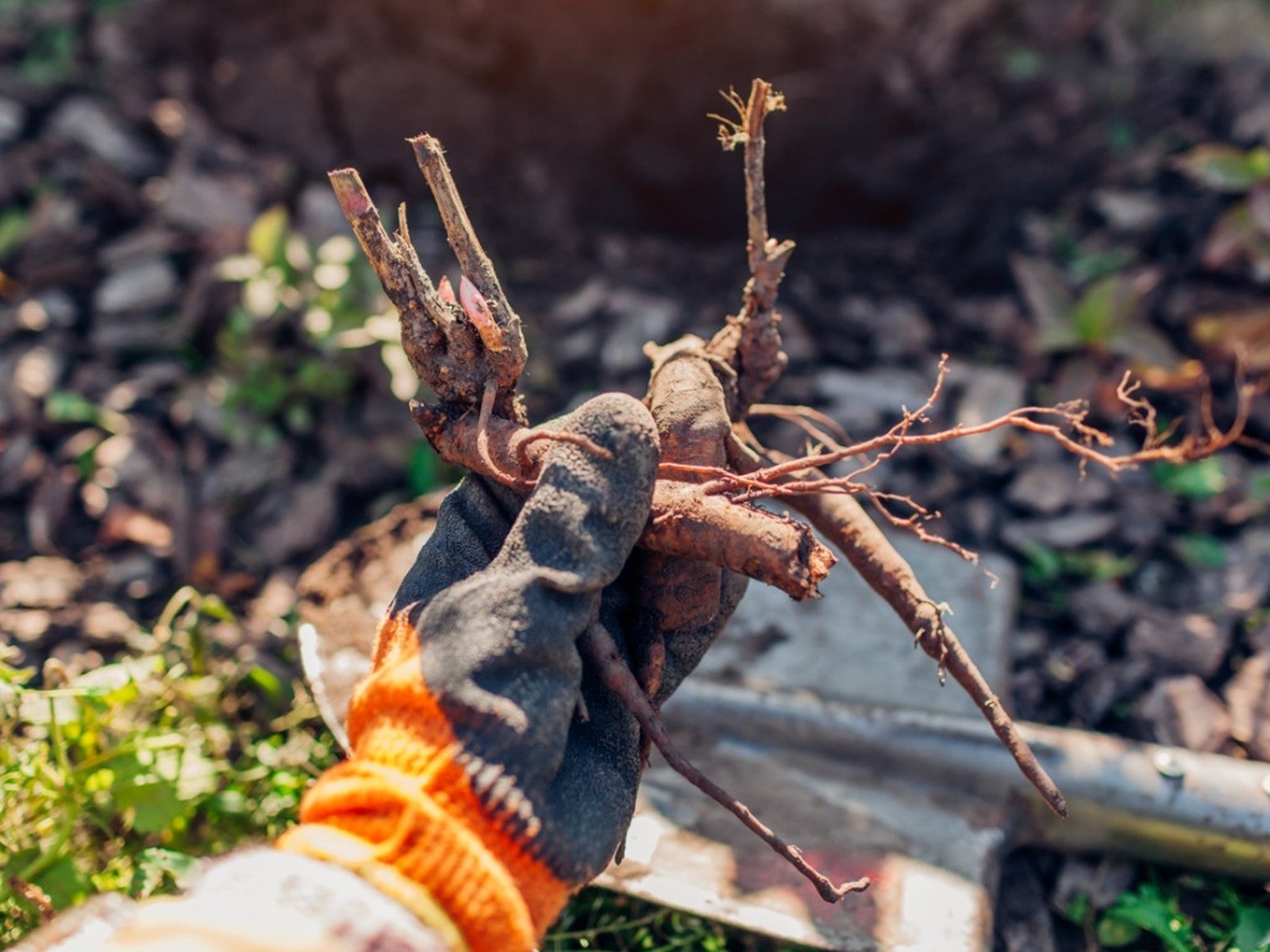Helpful Tips For Buying Bare Root Plants


Buying bare root plants for the first time can feel a little strange. These are plants sold while they are dormant without any soil around their roots and no rootball of soil. The plants are not sold in containers. What do bare roots on a plant look like? They look like sticks! But, properly planted and cared for, they can grow happily in your landscape.
Should I Buy Bare Root Plants?
Like every other thing in life, bare root plants have advantages and disadvantages. “Should I buy bare root plants?” is not a question with a universal answer. The important thing is to consider whether they’re right for you. Since almost all bare root plants are also available with a rootball, the choice is really up to each gardener.
Bare root plants are pulled from their growing spot while they are dormant. The soil is shaken off the roots because it makes them lighter. This means they're easier to transport and therefore considerably less expensive. The least expensive trees, bushes, roses, and perennials are those sold with bare roots. Anyone ordering bare root plants online or from a catalog will appreciate that lightness.
Another advantage is how easy it is to plant bare root plants. You simply backfill the planting hole with the removed soil rather than light container soil, so the plant will not have to adapt from the seller’s container soil to native soil.
But be aware that bare root plants have to be planted promptly. Those roots have to be in the ground before the plant breaks dormancy. This may leave just a small window of planting time after transport.
Buy Bare Root Plants from a Reputable Source
It’s always important to buy landscape plants from a reputable source. When a nursery or grower puts a lot of effort into the care of plants, you end up with healthier, hardier, more vital shrubs and trees.
This is particularly true of bare root plants. They must be cared for when planted, but also removed from the soil at the appropriate time. The grower must take care not to break their roots and to ship them in plenty of time to get to a nursery in your location before the weather warms and dormant plants “wake up.” A grower will normally get the buyer’s hardiness zone and base the shipping window on this.
Sign up for the Gardening Know How newsletter today and receive a free copy of our e-book "How to Grow Delicious Tomatoes".
What Does a Healthy Bare Root Plant Look Like?
When you go to the nursery to buy bare root plants, selecting healthy ones needs to be your number one priority. You’ll want to carefully inspect the roots as well as the buds to make sure the plant will have the chance to thrive in your garden. Here’s what to look for:
Firm, Heavy Roots
Since a bare root plant will have to establish a vigorous root system quickly in order to survive, a healthy root system is essential. Take a close look at the roots at the store. You want plants with a good-sized root system. What if the roots are damaged? Minor damage and even a few broken roots won’t exclude the specimen, since you can take them off before planting with sharp pruning shears. But if the roots are extremely light, or if they are soft and squishy, don’t bring that plant home.
Not Dry or Brittle
You don’t want the bare root plant’s roots to be dry or brittle either, however. Once these plants are removed from the soil, the nursery should “heel in” the plants by covering the bare roots with loose, moist material like sawdust. If the roots look dried out, this has not been done and some or all of the roots may have died.
No Signs of Mold or Damage
Signs of mold or damage are an indication that the plant was not given appropriate care when it was removed from the soil. While some damage can be cut out, it’s a good idea not to accept a plant with moldy roots or extensive root damage. It isn’t necessarily a sure-fire sign that the plant is dying, but it does decrease the chances that it will thrive.
Firm, Green Buds
Yes, the roots are important when selecting bare root plants, but so is the canopy. Ideally, you want plants with healthy canopies and firm, green buds.
Good Packaging
Careful, appropriate packing protects both the bare roots of the plants but also the trunk and branches. Well-packed plants keep the trees cool and moist, which extends their vitality as well as their life.

Teo Spengler is a master gardener and a docent at the San Francisco Botanical Garden, where she hosts public tours. She has studied horticulture and written about nature, trees, plants, and gardening for more than two decades, following a career as an attorney and legal writer. Her extended family includes some 30 houseplants and hundreds of outdoor plants, including 250 trees, which are her main passion. Spengler currently splits her life between San Francisco and the French Basque Country, though she was raised in Alaska, giving her experience of gardening in a range of climates.